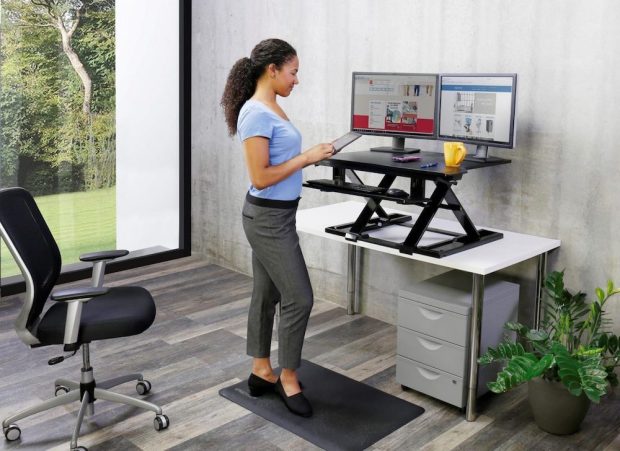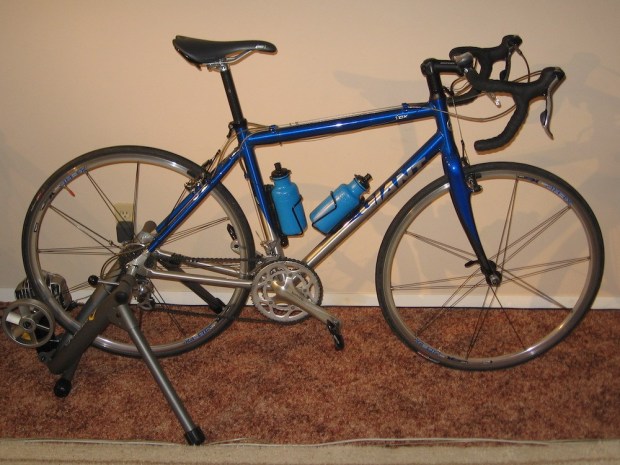Precisely how the coronavirus crisis will unspool in this country over the coming months is unclear. But I’m betting I will have to hole up in my house — maybe for days or weeks at a time — at some point during this health emergency.
Perhaps I’ll catch the virus and will have to self-quarantine. Maybe I will stay healthy, but feel disinclined to leave my residence as the virus runs rampant.
 So, in addition to stocking up on prescription meds, non-perishable foodstuffs, cleaning supplies and other essentials, I have been thinking hard about how I would stay sane and productive in isolation.
So, in addition to stocking up on prescription meds, non-perishable foodstuffs, cleaning supplies and other essentials, I have been thinking hard about how I would stay sane and productive in isolation.
How would I get work done? How would I work out? How would I ensure I have an ample stockpile of reading material at a reasonable cost? (Not having anything good to read is one of my worst nightmares.)
I’ve actually figured out most of this already. As an introvert, I am OK being cooped up, and I learned long ago how to be an effective hermit. Minnesota’s long winters have been another incentive to turbocharge my solo lifestyle. But, with the coronavirus looming, I’ve stepped up my preparations.
If you have been thinking along similar lines, maybe you’ll find some of my information here to be useful.
WORKING FROM HOME
Telecommuting has long been on the rise in this country, and it’s getting increased attention as the virus spreads. If you have the kind of job that places you at a computer for most or all of the workday, you might be a good candidate for remote work with your employer’s blessing.
But you need to be able to function comfortably and safely for hours at a time, so a laptop at your kitchen table might not cut it. When setting up a home office, consider one piece of gear you might already be using at the office — a standing desk so you can work in an upright position.
I recently got a bit irritated by a blog post titled, “Can standing desks really slow down the spread of the coronavirus?” My initial response was, “Wait, they are using coronavirus as an excuse to sell standing desks?” And, yes, yes they are.
But you really should invest in such a contraption — ideally an adjustable one that allows you to switch from a standing position to a sitting position and back within seconds. If your employer has the budget to get you a standing desk for your home use, so much the better.

As a journalist who reviews tech products, I’ve had a number of standing desks on loan cycle through my office in recent years. Below are some nice ones. Note: Ergotron is a Twin Cities company.
- Vari’s Electric Standing Desk models are full stand-and-sit desks that replace a non-adjustable desk. The motorized rigs rise and fall at the touch of a button. They are super-sturdy with a horizontal crossbar attached to vertical legs, and have ample room for multiple displays. Two sizes, $695 and up
- Vari’s Standing Work Station operates on a similar principle, but it’s a lot smaller (good for compact work areas) and is non-motorized (it is raised and lowered via a mechanical lever). I’ve never used this one, but a coworker bought it and loves it. $495
- Ergotron’s WorkFit-TX Standing Desk Converter is the kind of rig that sits atop a regular desk and adds sit-stand adjustability. This model is not super compact, but offers maximum comfort in all positions. $549
- Ergotron’s WorkFit-TS Compact Desk Converter is similar to the one above, but takes up a lot less space, and is more affordable. I like that the keyboard tray is easily removed if you just want to use this rig as a minimalist laptop stand. $299
EXERCISING AT HOME
I am an avid athlete, focused mostly on long-distance bicycling, and I am uneasy at the possibility that I might have to curtail my riding because of the coronavirus.
The obvious alternative to regular bicycling is indoor, stationary bicycling, but this can be expensive. Peloton exercise bikes cost thousands. Competing models from the likes of Echolon don’t cost quite as much, but are still spendy.
Why not adapt your existing bicycle for stationary workouts? This is easy: Just get a “trainer” contraption that elevates your bicycle rear, and places your back tire on a metal roller for friction to simulate how a road or trail feels. Get on, and start pedaling!

Some trainers cost $1,000 or more, but you can get into a basic model for $50 to $150. This BikeTrainerWorld post has a good rundown of the latest options. For something a bit fancier, look at Kinetic trainers provided by Twin Cities-based Kurt Manufacturing Company.
EBOOKS FOR NOTHING
Buying books can get expensive if you are a voracious reader like me. That is why I love public libraries. When I go into a St. Paul Public Library branch, I invariably totter back out with a tall stack of books on loan.
The coronavirus could put a stop to that. I must confess to some unease about handling volumes that have passed through so many other hands.
Good thing public libraries offer an alternative — ebook loans. Instead of checking out a physical book, you borrow the electronic equivalent using your phone, tablet or computer. The ebook files automatically expire at the end of the loan periods, so there is nothing to return.
Audiobook loans from public libraries work the same way.

Public libraries work with companies such as Overdrive and Bibliotheca that, in turn, broker deals with publishers to make books available for lending in audio and text form.
All you have to do is install Overdrive’s Libby app or Bibliotheca’s CloudLibrary app on your phone or tablet (or access the ebook catalogs on your computer via the home page of your public library). Enter your library-card number, and you are ready to check out ebooks and audiobooks with a few taps or clicks.
I’m also a member of the Hennepin County Public Library, which has Libby and CloudLibrary loans. The Ramsey County, Dakota County and Washington County library systems all work with Bibliotheca, but only Washington County does so with Overdrive.
In addition, the St. Paul and Hennepin County library systems work with RBdigital to provide digital versions of top magazines in electronic form. This service is free and widely adopted by public libraries — Ramsey County, Dakota County and Washington County also provide it. RBdigital works best on tablets.




